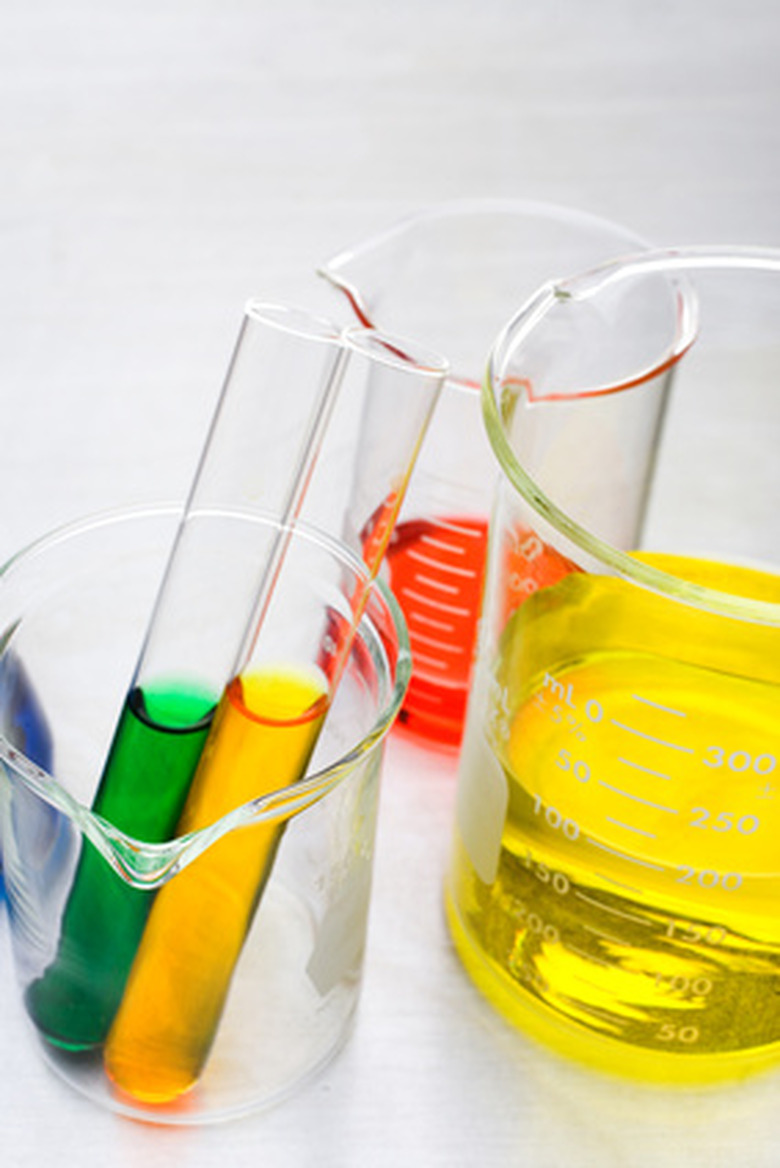How To Determine An Unknown Chloride Titration
Chemists perform a procedure called a titration to determine the concentration of a solute in a solution. Chloride ions result from dissolving common table salt in water. Silver nitrate is commonly used as a titrant for determining an unknown sodium chloride concentration. The silver and chloride ions react in a 1 to 1 molar ratio (from the chemical equation in reference 1), which makes the calculations involved in this particular titration relatively easy.
Step 1
Use your balance to measure 2.55 grams of solid silver nitrate. Add this quantity to your 500 mL beaker and add water until the beaker is filled to the 300 mL mark. Stir the solution until all of the silver nitrate is dissolved. This will create a 0.05 Molar (M) silver nitrate solution.
Step 2
Load your titration burette with 0.05 silver nitrate.
Step 3
Add 30 mL of your unknown chloride solution to your 100 mL beaker. Add 3 drops of indicator solution to the beaker, then place it underneath the burette.
Step 4
Release a slow stream of silver nitrate from the burette into the beaker, swirling the chloride solution all the while. Immediately stop adding silver nitrate when a transparent peach color appears in the chloride solution and does not disappear. This color change indicates that the solution has reached the equivalence point where the amount of silver ions is equal to the amount of chloride ions.
Step 5
Multiply the molarity of the silver nitrate by the number of liters used to achieve the peach color in the chloride solution. For example, suppose the burette indicates that you used 15 mL of silver nitrate to reach the equivalence point. The calculation would look like this:
Moles of silver nitrate used = 0.05 moles/L x 0.015 L = 0.00075 moles
Since the silver and chloride ions react in a 1 to 1 ratio, this reveals that there are 0.00075 moles of chloride in the solution.
Step 6
Calculate the molar concentration of the chloride solution by dividing the number of moles present by the volume of the solution in liters.
Chloride solution concentration = 0.00075 moles / 0.03 L = 0.025 M
In this example, the unknown chloride solution has a molar concentration of 0.025 M.
Things Needed
- Dropper
- Unknown chloride solution
- Silver Nitrate (solid)
- Indicator solution (Potassium chromate)
- Balance
- Burette
- 500 milliliter (mL) Beaker
- 100 mL Beaker
- Safety goggles, gloves, apron
Warning
Always wear your safety gear while working with chemicals.
References
- "Chemistry"; Anthony Wilbraham and Dennis Staley; 1997
Cite This Article
MLA
Banas, Timothy. "How To Determine An Unknown Chloride Titration" sciencing.com, https://www.sciencing.com/determine-unknown-chloride-titration-6189396/. 24 April 2017.
APA
Banas, Timothy. (2017, April 24). How To Determine An Unknown Chloride Titration. sciencing.com. Retrieved from https://www.sciencing.com/determine-unknown-chloride-titration-6189396/
Chicago
Banas, Timothy. How To Determine An Unknown Chloride Titration last modified March 24, 2022. https://www.sciencing.com/determine-unknown-chloride-titration-6189396/
